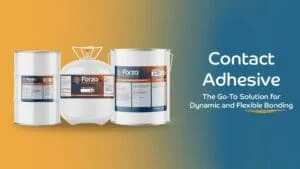What does “solids content” mean?
Solids content is a term often used when discussing adhesives, particularly solvent-based adhesives, where the solvent serves as a carrier for the solid/non-volatile content.
So what does the term “solids content” refer to? It refers to the amount of base product (proportion of non-volatile material) left in the adhesive once the volatile solvent has vaporized. This number is expressed as a percentage.
As far as percentages go, 18-20% is fairly low, whereas 30%+ is good. What does a high or low percentage mean? Generally speaking, the higher a solid content in an adhesive, the further it will go, providing more adhesive coverage on the materials being bonded. Lower S-D (especially in sealants or structural adhesives) will cause shrinkage, which may lead to cracking or other quality issues.
To find the solid content for the specific adhesive you’re using, consult the product data sheet, and you should find the percentage you’re looking for under the technical data section.
Have any questions about solids content, or any other confusing adhesive terms? Contact us, as your ally we would love to help you out!




